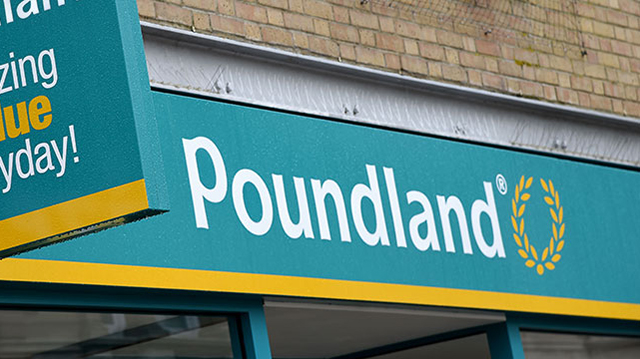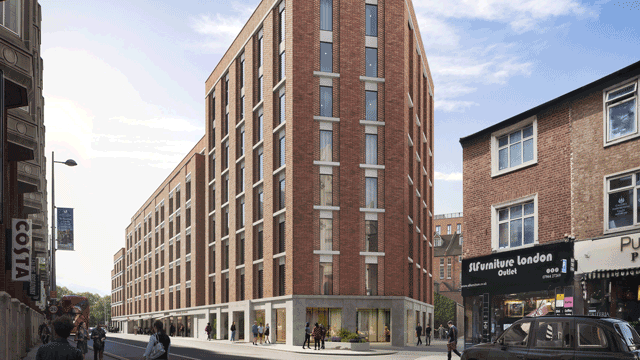Property players What lessons can Tottenham Hotspur learn from its arch-rival Arsenal when it comes to stadium development? Daniel Cunningham reports on the match so far
Spurs, to misquote one of the club’s songs, is on the march. Tottenham Hotspur Football Club will soon submit plans for a 58,000-seat stadium. But it will not be marching far -the ground will be built right next to its current home atWhite Hart Lane.
Three years after it gainsplanning consent, the club hopes to be playing in a state-of-the-art stadium. The 20-acre regeneration could be fully completed two years later, delivering 450 flats, a 77,000 sqft supermarket, a 150-bedroom hotel, plus club facilities and public space.
So, how can Tottenham successfully kick off its scheme, and what can it learn from Arsenal’s experience?
In nearby Islington, Spurs’ arch-rival Arsenal recently secured consent for the final phase of its Emirates Stadium regeneration, comprising 783 homes, a sports centre and bars/restaurants on Queensland Road.
Previous phases have already delivered a 60,000-seat stadium, 1,290 affordable and market homes, and office and leisure space. In addition, September will see the completion of Highbury Square, the redevelopment of the club’s former Highbury stadium, into 731 flats.
Tottenham’s project director, Paul Phillips, was also a key player in Arsenal’s Emirates Stadium scheme. He says: “In terms of the area, we are starting at a lower base than Arsenal. But Spurs’ scheme is such a huge investment that it will create a regeneration ripple effect.”
It is understood that the end value of Tottenham’s scheme is likely to be £300m-£400m. Funding, explains Phillips, will come from enabling development, stadium naming rightsand loan finance.
Associated development
According to Anthony Spencer, managing director of Stadium Capital Holdings – the man who masterplanned Arsenal’s regeneration and acted as agent and developer for the club – associated development can be crucial to such schemes.
“Arsenal’s scheme had to be more than a stadium or it would not have gained planning consent,” he says. “The new Wembley was built as just a stadium and its costs went up. With the associated development at Arsenal, we were able to reduce stadium costs.”
Arsenal’s scheme, plus land assembly, cost it £423m, although deals such as the £26m sale of the Drayton Park residential site to Galliard created income and reduced the stadium costs by £70m.
The scale of Tottenham’s associated development is much smaller than Arsenal’s, and Phillips saysthat the cost of the site is a lot less. Spurs has spent £50m so far on the project,including land assembly. By using its current landholding and buying up adjacent land, it now owns 85% of its proposed 20-acre site. In contrast, Arsenal opted for a new location, and Spencer assembled 60 acres, with 254 landowners bought out from one element of the site alone.
Spencer believes that Spurs should have considered a move with more associated development. “Spurs has taken the safe, easy option of developing right by its existing ground. In my opinion, it should have looked for site that is better in transport terms.”
Tottenham’s challenge now is to unlock the land’s value, as Arsenal has in Islington. The stadium will be Tottenham’s main driver of value. The club will aim to attain a similar level of match day income as the Emirates Stadium’s, which is around £100m pa. Spurs’ White Hart Lane currently generates £28.6m of match day income pa.
However, other uses, such as residential, are not as fail-safe as they once were. Spencer claims that Arsenal has made £500 per sq ft on residential space at the top of the market, and is still making £420 per sq ft on high-end flats.
Even in more salubrious Islington, Arsenal has not escaped speculation that it has fallen foul of the residential market collapse at its upmarket Highbury redevelopment in Highbury Square. Last year, Arsenal chairman Peter Hill-Wood said that any profit would be treated as a bonus. Spencer argues that market conditions look better now, that it is a unique scheme, and that 200 sales have been completed so far. “Ninety per cent of the flats have been presold, and the club is holding deposits of 20% in cases.”
Phillips argues that Tottenham will not be building homes during the recession: “These flats could come to the market in seven years’ time, and we are being conservative in our valuations at the moment. To build in this part of Haringey would be tough this year, but we hope to see market and local uplift.”
As for other commercial uses, Phillips says a hotel will feature at Tottenham’s scheme, preferably four-star, to benefit from the stadium’s conferencing facilities. He admits that local rents would not sustain offices, and says that the value to be derived from large-scale leisure uses, such as cinemas, would not justify their floorplates.
This echoes the fact that Arsenal recently dropped the office and cinema elements of its Queensland Road plans in response to market conditions. Although offices at Arsenal’s scheme had previously gone for £15-£27 per sq ft, depending on location,the volume of homes at Queensland Road increased from 220 to 783.”I had to act quickly once the market went,” admits Spencer.
Funding streams
Residential and commercial development will help Spurs, as it helped Arsenal, but Phillips is upfront about the fact that debt finance will also be an important funding stream. In Arsenal’s case, despite carrying out enabling development, the club had to put in around £150m of equity and it borrowed £200m to build the Emirates Stadium. Its total debt now stands at £416m and the club is reportedly under pressure to renegotiate its £133m loan with Bank of Ireland, Barclays and RBS for the Highbury Square scheme.
But Spencer says the debt needs to be seen in context: “It pays to be at the Emirates Stadium because the club is making more money because of the increased capacity. It has more money to spend on players than if it stayed at Highbury.”
Phillips is quick to reiterate Tottenham’schairman Daniel Levy’s pledge to fans that the scheme will not affect the club’s financial security as the club with the fifth highest turnover in the Premier League.”We can realise the value of the foodstore in year three of the project. We do not need the peak debt levels associated with the Emirates Stadium.”
Much as Spurs fans will hate to admit it, the club can learn a lot from its old enemy Arsenal’s foray into the property market. However, Tottenham’s scheme comes with its own unique set of circumstances and challenges. The associated development is on a smaller scale and it will need to source additional finance in a tough economic climate. Leisure, p70










